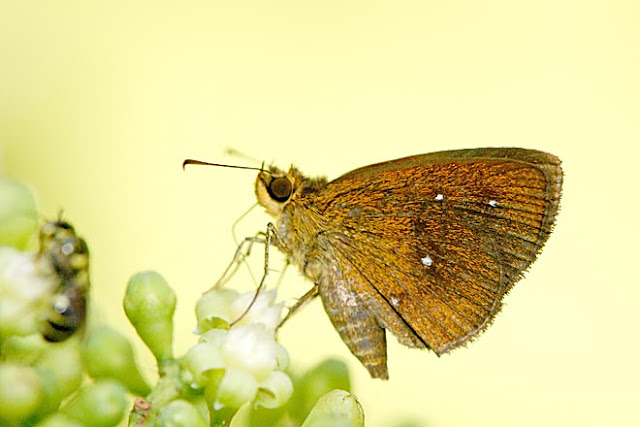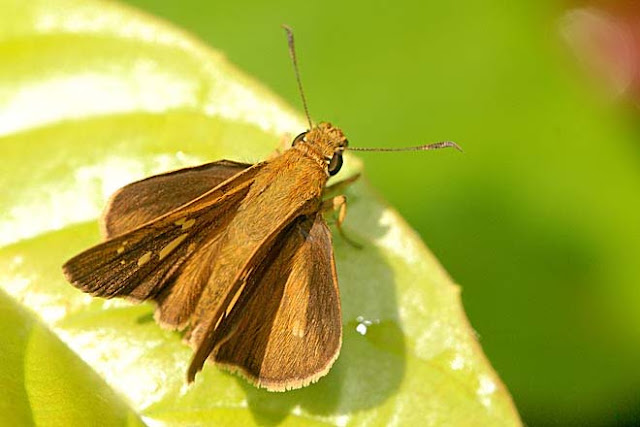Upper Seletar Reservoir (USR) Park seemed to be the best butterfly-hunting location during the past few weeks. So, on a nice Saturday morning, I was again looking out for critters and hoping for surprises along the forest trails.
A pair of mating flies (not sure what these flies are) perched right in front of me but beneath a leaf while I was standing besides a grass patch outside the golf-driving range.
I noticed a a tiny black ant "sleeping" on a flower stem of a kind of grass.
Usually, I seldom walk on the shady and litter-filled trail besides the carpark nearest to the golf-driving range. For a change, I went in there. Strolling forward and chasing away some mosquitoes "attacking" me, I noticed a female Archduke on the ground. A shot from far suggested it was a Yellow Archduke (Lexias canescens pardalina) - the rarest of the three Lexias species found here.
What a waste ! she was always facing me and just too shy to stay longer for me to snap a better shot.A male Black Tipped Archduke (Lexias dirtea merguia) flew past me at the ground level and landed on a dry leaf on a familiar trail I always explore.
At a grass patch at my favourite spot, I saw this brown skipper resting on a blade of grass. Except for the morning breeze, it behaved perfectly for me to get closer taking a few shots. Highly resembling the Small Branded Swift (Pelopidas mathias mathias) but without a cell spot on the underside hindwing, it looks like the Formosan Swift (Borbo cinnara).
At the same vicinity, a male Palm Dart (Telicota augias augias) also rested on a leaf surface in a shady quiet corner.
While waiting and searching at the Ixora bushes, I saw Simon and Yano, one after another moving towards my direction. At the round-about, we decided to venture deep into the forest. When this large red-eyed skipper perched , I instinctively squeezed off two shots.
We continued to move forwards. A rather tame Sumatran Gem (Poritia sumatrae sumatrae) was waiting for us.
It just fluttered around the area and gave us a few more shots.
I observed that whenever it settled on a new perch, it would open its wings a few times. This is an opportune shot of its upper sides.
Deep in the forest, I spotted a few Dark Posies (Drupadia theda thesmia). This was shot at one of the highest points in the middle of the forest where another Yellow Archduke was seen too,
A skittish fellow found in the deep forest while we were on our way out, the Shining Plushblue (Flos fulgida singhapura) is considered a rare lycaenid.
I was lucky to spot another Flos species, the Bifid Plushblue (Flos diardi capeta) found at the second trail when we came back there again. It disappeared completely after some shots.
A long but exciting outing indeed.































